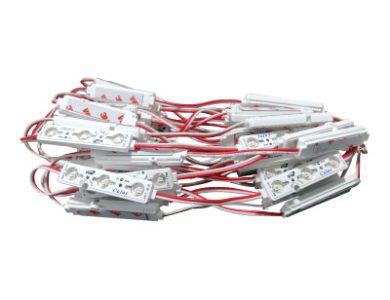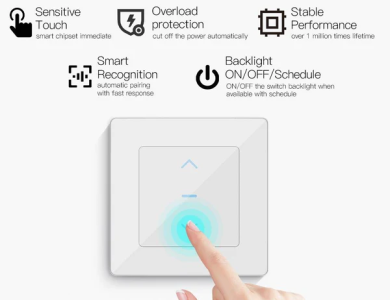Plastic injection molding machines are the lifeblood of modern manufacturing, producing everything from automotive parts to food packaging. While these machines are built for precision and speed, getting the most out of them requires careful optimization. Proper maintenance, process improvements, and modern technology upgrades can significantly enhance productivity, reduce waste, and save on energy costs.
In this guide, we’ll walk you through actionable tips to optimize your plastic injection molding machine for maximum efficiency. Whether you’re running a small production line or a large-scale facility, these strategies will help you get the most from your equipment.
Why Optimize Your Plastic Injection Molding Machine?
Efficiency isn’t just about faster production—it’s about smarter production. Optimizing your machine offers several key benefits:
- Lower Energy Costs: Reducing energy consumption helps save money and meet sustainability goals.
- Improved Product Quality: A well-optimized machine minimizes defects and rejects.
- Increased Output: Faster cycle times mean higher production capacity.
- Extended Machine Lifespan: Regular optimization and maintenance reduce wear and tear.
- Lower Waste: Reducing material waste improves profitability and supports eco-friendly practices.
1. Fine-Tune Your Machine Settings
Injection Speed and Pressure
Adjust the injection speed and pressure to match the product requirements. Excessive pressure can cause flash (excess plastic on edges), while insufficient pressure may result in incomplete parts.
Temperature Control
Ensure the barrel and mold temperatures are set correctly for the material you’re using. Overheating can degrade plastic, while low temperatures can lead to poor flow and incomplete molds.
Cooling Time
Optimize the cooling time to reduce cycle times without compromising the quality of the product. Cooling accounts for a significant portion of the cycle, so even small adjustments can save time and energy.
2. Perform Regular Maintenance
Neglecting routine maintenance is one of the quickest ways to lose efficiency. A well-maintained machine runs smoothly and consistently.
Key Maintenance Practices:
- Clean the Screw and Barrel Regularly: Residual plastic can lead to uneven melting and defects.
- Inspect Hydraulic Systems: Check for leaks and maintain proper fluid levels to ensure consistent pressure.
- Monitor Moving Parts: Lubricate and replace worn components, such as screws and molds, to prevent breakdowns.
- Calibrate Sensors: Misaligned or faulty sensors can result in incorrect measurements and poor-quality products.
3. Use High-Quality Raw Materials
The quality of your raw materials directly impacts machine performance and product quality. Low-grade or contaminated plastic can clog the machine, cause inconsistent molding, and increase wear.
Tips:
- Pre-dry materials like PET to remove moisture and prevent defects.
- Invest in high-quality resin that flows easily and meets your product requirements.
- Use colorants or additives compatible with your machine and the material.
4. Upgrade to Energy-Efficient Technology
Older machines tend to consume more energy and operate less efficiently. Upgrading to modern, energy-efficient technology can pay off in the long run.
Consider These Upgrades:
- Servo Motor Systems: Replace traditional hydraulic systems with servo motors to reduce energy consumption.
- Variable Frequency Drives (VFDs): These help regulate motor speed, optimizing energy use during operation.
- Insulation for Heating Elements: Proper insulation reduces energy loss during the heating process.
5. Reduce Material Waste
Material waste not only costs money but also affects your overall efficiency. Minimizing waste is a win-win for both the environment and your bottom line.
Strategies to Reduce Waste:
- Proper Mold Design: Ensure your molds are designed with minimal material usage while maintaining product integrity.
- Recycle Scrap: Reprocess and reuse scrap materials where possible.
- Use Hot Runner Systems: These systems reduce the waste associated with cold runner sprues.
6. Optimize Mold Design and Maintenance
The mold is a critical component of the injection molding process, and its design and condition directly impact efficiency.
Tips for Mold Optimization:
- Proper Venting: Ensure molds are vented properly to prevent trapped air, which can cause defects.
- Maintain Cooling Channels: Keep channels clean to ensure efficient cooling. Blockages can increase cycle times and cause uneven cooling.
- Invest in High-Quality Molds: Durable molds with precise machining reduce maintenance needs and ensure consistent product quality.
7. Automate Your Production Process
Automation can drastically improve efficiency and reduce labor costs. Modern injection molding machines come equipped with automated features, but additional equipment can further streamline production.
Automation Tools:
- Robotic Arms: Automate the removal of molded parts, speeding up cycle times.
- Material Feeding Systems: Use automated feeders to ensure a consistent supply of raw materials.
- Real-Time Monitoring Systems: Track machine performance and production metrics to identify areas for improvement.
8. Monitor and Analyze Production Data
Modern machines often include sensors and software for real-time monitoring. Use this data to identify inefficiencies and make adjustments.
Key Metrics to Track:
- Cycle Time: Measure the time for each production cycle and aim for consistent results.
- Defect Rate: Identify patterns in defects to pinpoint issues with molds, materials, or settings.
- Energy Usage: Monitor energy consumption to detect inefficiencies.
9. Train Your Operators
Even the most advanced injection molding machines won’t perform well without skilled operators. Proper training ensures that operators can:
- Quickly identify and troubleshoot issues.
- Adjust settings to optimize production.
- Perform routine maintenance tasks to keep the machine running smoothly.
10. Implement Preventive Maintenance Programs
Instead of waiting for a breakdown, implement a preventive maintenance program to keep your machine in top condition. This includes:
- Scheduling regular inspections.
- Replacing parts before they fail.
- Keeping detailed maintenance logs to track performance over time.
FAQs About Optimizing Plastic Injection Molding Machines
1. How often should I perform maintenance on my machine?
Regular maintenance should be done daily, weekly, and monthly, depending on the component. For example, clean the screw and barrel daily, and inspect hydraulic systems weekly.
2. What’s the best way to reduce cycle time?
Optimize cooling time, reduce mold open/close time, and ensure the injection speed matches your material and product requirements.
3. Are older machines worth upgrading?
Yes! Upgrading key components like servo motors or control systems can drastically improve efficiency without replacing the entire machine.
4. How can I ensure consistent product quality?
Maintain proper settings (temperature, pressure, speed), use high-quality raw materials, and keep molds clean and well-maintained.
Wrapping It Up
Daoben Machinery is a professional manufacturer of molding machines. We are a professional plastic injection molding machine manufacturer and supplier. Producing injection molding machines of 30 Ton to 4000 Ton. Optimizing your plastic injection molding machine is a smart investment in your business’s success. From tweaking machine settings to upgrading technology, small changes can lead to significant gains in efficiency, product quality, and cost savings. By staying proactive with maintenance, training, and monitoring, you’ll ensure your machine operates at peak performance for years to come.




